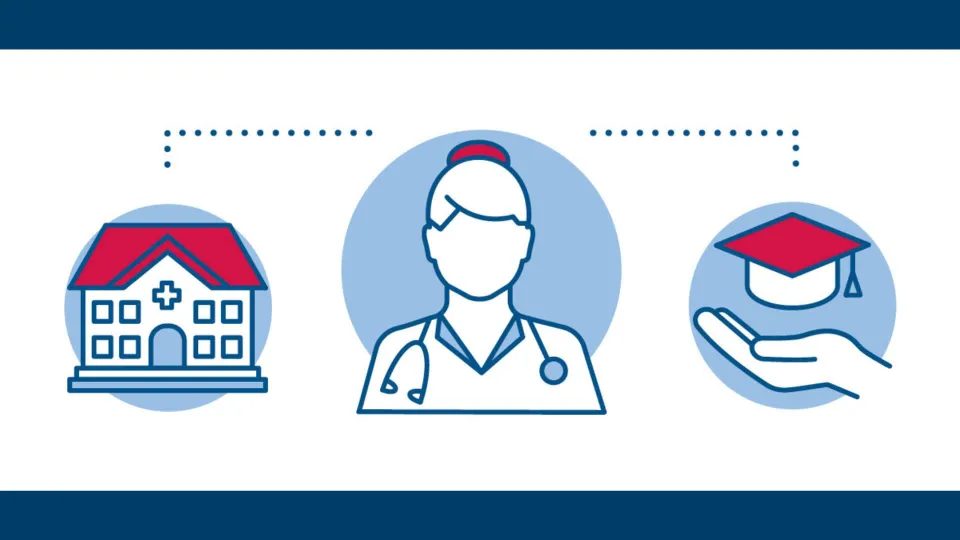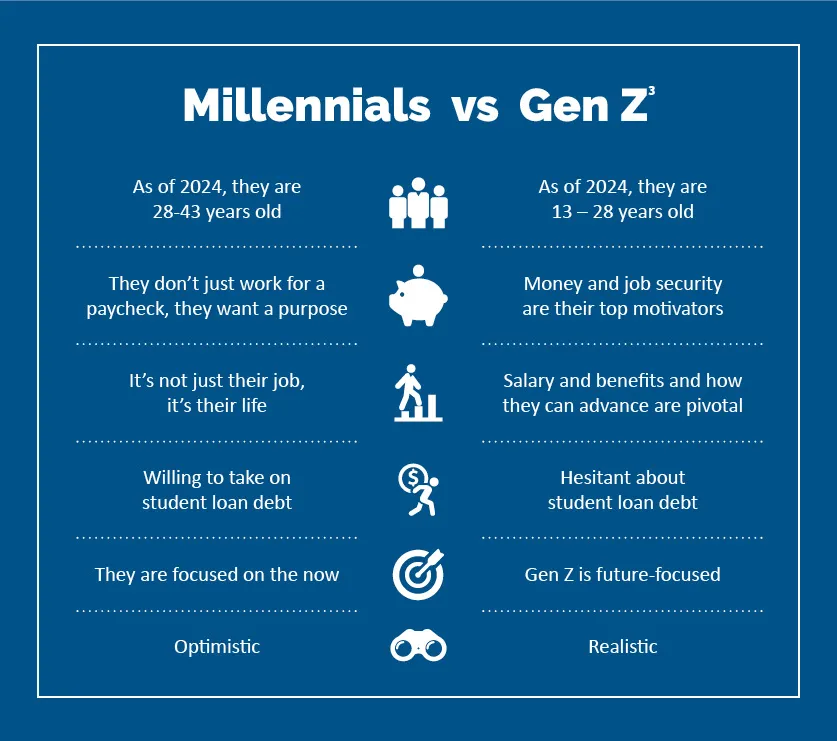
The nursing shortage has been an ongoing theme throughout this edition of INSIGHT, so we will forego the dire shortage statistics that our readers can surely quote as well as we can. Instead, in this article, we explore workforce solutions that have the potential to solve shortages in individual care settings when educators and health systems work together to achieve the desired result.
Know Your Audience

The first thing educators would want health systems to acknowledge is that students today are different. Between Generation Z and Millennials, you are reaching prospective students ages 13 to 43, which encompasses all students in the classroom now and for the next decade.
Both generations are old enough to remember the crippling mortgage crisis, and they have lived through a pandemic. They understand that things outside of their control can have a huge impact on their livelihood and well-being. However, there are major differences in how these events have shaped their world perspectives.
Millennials seek purpose. While they are often relegated as the inventors of the selfie and Instagramming photos of their dinner, they are far less shallow and much more optimistic than that stigma would suggest. If you want to know what makes Millennials tick, know that they value trust and freedom, which means they expect to be trusted and given freedom in their professional lives.
Generation Z internalized events a bit differently. They are more cautious and take fewer risks than prior generations. They are more cost-sensitive and want to see value for the tuition paid for education. If you want to understand Generation Z, know that they attach great importance to the security a career can provide them in their personal and professional life.
Three New Models
How can we use these insights to craft custom educational programs that deliver the highly skilled and compassionate workforce needed? Here is an overview of three new models that are gaining traction in the world of workforce solutions.
- Tuition Reimbursement Based on Service Commitment: Consider this as a revamped Nursing Corps. Students who qualify for the program earn tuition reimbursement tied to years of service at the hospital partner. There would be several ways to structure the reimbursement, but that’s beside the point. In this scenario, a hospital builds a pipeline of new nurses and solves first-year nurse turnover issues at the same time. When considering that each percentage change in RN turnover will cost/ save the average hospital $380,600 per year, it’s not difficult to see how a reimbursement program could be self-funded.
- Dedicated Cohorts: In this model, hospitals and colleges partner to train a cohort of students made up of existing hospital staff. General education courses are taught online, and skills and clinical courses are taught in person at the hospital, where the students/employees already are. Generally, existing educational benefits are applied vs. full reimbursement. This model warrants important consideration as it offers career pathways for all types of existing workers and is not limited to nursing. This could be cohorts of medical assistants, respiratory therapists or other allied health careers.
- Start or Acquire a Nursing School: Some health systems choose to build or acquire a school, which allows for the flexibility of developing their own curricula. The most prominent recent example of this approach is HCA Healthcare’s acquisition of Galen College of Nursing in 2020. This is by far the most capital-intensive new model. Running quality nursing programs is hard work (we haven’t even mentioned the severe nursing faculty shortage), and without the core competencies in-house, we see major pitfalls in this choice. However, the pros of this approach are undeniable. Students who enroll obtain all clinical hours needed for graduation at an HCA facility, thereby ingraining their culture, policies and procedures into the new nurse. This makes for an easier transition to practice and is something we see tremendous value in.
In Conclusion
While the incentives for educators and health systems are different, they both want the same results: caring, compassionate and culturally competent nurses ready to contribute to patient care their first day on the job.
While the nursing shortage has been ongoing and has been exasperated by the pandemic, we are confident and optimistic about these promising new models. When you are ready, Concorde Career College is here to discuss all your workforce solution needs.
NSI National Healthcare Retention report https://www.nsinursingsolutions.com/Documents/Library/NSI_National_Health_Care_Retention_Report.pdf
“HCA Healthcare investing $300K to improve access to healthcare careers,” Healthcare Finance https://www.healthcarefinancenews.com/news/hca-healthcare-investing-300k-improve-access-healthcare-careers
Source of graph information: Zendesk and Route Marketing
News & Press Releases
View More| Press Release
| News Article
Concorde Career Colleges Provided Free Dental Cleanings for Communities Nationwide in October
| Press Release
